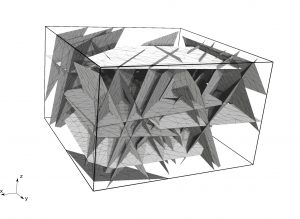Simulation Technology: From Models to Software
Dozenten:
B. Flemisch, Stuttgart
B. Wohlmuth, München
Gastdozent:
G. Leugering, Erlangen
Numerical simulations have become an important tool for many engineering applications. For example, they allow engineers to conduct virtual experiments on during the design process of a device, which is significantly less costly than building a prototype and conducting experiments on it. In geotechnical engineering applications, simulations are of particular importance due to the uncertain nature of the subsurface and the immense difficulties and costs involved in the realizations of experiments before an operation.
The process of numerical simulation is highly interdisciplinary, since it is necessary to find a mathematical model of the actual real-life system, to discretize this model, to run it on a computer, and then to transfer the results back to the real life. Thus, the intention of this course is to bring students together from different scientific fields such as mathematics, computer science, physics, chemistry and engineering - and of course, in particular from computational or simulation technology programs. So you should be willing to cooperate with people from other fields of research, to discuss their ideas and to present a topic from your field in a talk by your own.
Following the success of the last years, we will again reduce the individual presentations and work on a project in the seminar which consists of implementing the presented ideas in a piece of software. This year, we want to focus on fluid flow through fractured porous media by completing and using a computational toolchain that
- generates a set of fracture planes based on a few statistical input parameters or the drawings onto a whiteboard,
- finds all intersections of the individual fractures in order to determine the entire geometry of the resulting fracture network,
- converts the result into a format that can be read by an existing mesh generation tool,
- communicates the mesh to an existing simulator to perform flow and transport simulations on the generated geometry,
- and visualizes the computational results.
That means that you will not only learn something new and interesting in theory, but also how to develop jointly a software application!
The course is open for 2nd year bachelor up to advanced master students. The course language will depend on the participants; German if all are capable of speaking and understanding German reasonably well, English otherwise.

